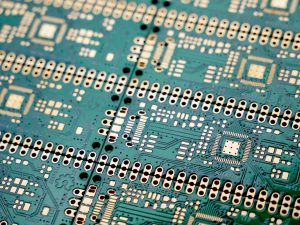In the electrical connectors industry, the choice between metal and plastic can be a crucial decision. Each type has its own set of advantages and limitations, and knowing these differences is essential for making informed decisions. This blog will explore distinctions between metal and plastic connectors.
Mechanical Lifespan:
One of the primary differentiating factors between metal and plastic male female connectors is their mechanical lifespan, which refers to the number of insertions and removals they can withstand. Industry standards typically specify a range of 500 to 1000 cycles. When a connector reaches the end of its designated mechanical lifespan, it is expected that its contact resistance, insulation resistance, and voltage withstand capabilities should not exceed the prescribed standards. This aspect does not significantly differ between metal and plastic connectors.
Electrical Performance:
When it comes to electrical performance, parameters such as rated voltage, rated current, contact impedance, and insulation resistance are governed by specific standards. Both metal and plastic connectors can meet these standards effectively. This means that whether you opt for a metal or plastic connector, you can expect them to perform equally well concerning electrical properties.
Environmental Parameters:
The environmental conditions in which connectors are used, stored, transported, and exposed to can significantly impact their performance. Factors like temperature, humidity, rapid temperature changes, atmospheric pressure, and corrosive environments should be taken into account. In such cases, the choice of a metal housing over a plastic one can be advantageous due to metal’s durability and resistance to harsh environments. However, if the operating conditions are less demanding, plastic connectors can be a cost-effective and practical choice.
Termination Methods:
Termination methods refer to how the connector’s male and female contact components interface with electrical wires and cables. Both metal and plastic connectors can offer various termination options. Factors to consider when choosing between them include the need for shielding capabilities. In this regard, metal connectors often excel due to their superior electromagnetic interference (EMI) shielding properties. However, it’s essential to consider not only the specific requirements of your application but also the overall cost and structural suitability of the connector.
To summarize, metal and plastic connectors share many similarities in terms of mechanical lifespan, electrical performance, and connection methods. The choice between the two largely depends on environmental parameters, shielding requirements, and cost considerations. Here are some key takeaways to help you make an informed decision:
Consider the Operating Environment: If your connectors will be exposed to extreme temperatures, high humidity, or corrosive conditions, metal connectors may be the better choice for their durability and resistance.
Shielding Requirements: If your application demands EMI shielding, metal connectors are often the preferred option due to their superior shielding properties.
Cost and Structure: Plastic connectors are generally more cost-effective and can be structurally advantageous in some cases. Consider your budget and the physical characteristics of your application.
Termination Needs: Evaluate the specific requirements of your project, such as the type of wires and cables you are using and the connector’s termination method. Make sure it aligns with your application’s demands.
In conclusion
While both metal and plastic connectors have their distinct advantages, the choice between them should be based on your unique application and environmental conditions. By knowing the differences and considering the factors discussed in this blog, you can consider Shine Industry Connector when selecting connectors for your electrical projects.




